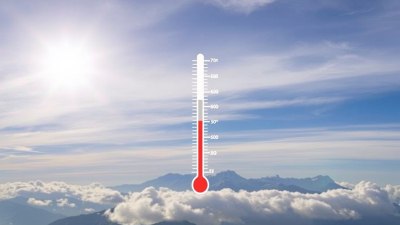Why Renting a Bike Sounds Fun Until You Realize the Pavement Is 200°F
Explore the joys and challenges of renting a bike in extreme heat. Understand safety tips, health risks, and fun alternatives.

Image by lookstudio on Freepik
Renting a bike can seem like an exciting way to explore a new city, get some exercise, and enjoy the sunshine. However, not everything is as idyllic as it may seem when the pavement you’re riding on reaches sizzling temperatures of 200°F. Let’s dive into the fun of cycling, the drawbacks of extreme heat, and essential tips for making the most out of your biking experience while staying safe.
The Allure of Renting a Bike
Renting a bike offers a sense of freedom and adventure. Whether you’re navigating through bustling city streets, winding through scenic bike paths, or enjoying park trails, cycling allows you to experience your surroundings in a unique way. In many urban areas, bike-sharing programs enable easy access to bicycles, making them a convenient choice for transportation. The thrill of pedaling through the heart of a beautiful city while taking in the sights and sounds can be exhilarating.
The Joy of Exploring
One of the best aspects of renting a bike is the exploration. Cyclists can cover greater distances compared to walking, allowing you to visit multiple attractions in a shorter time. Many cities have dedicated bike lanes and trails that provide a safer riding experience. Exploring neighborhoods, scenic parks, and waterfronts can make for unforgettable memories. Plus, it’s a fantastic way to stay active and healthy while enjoying outdoor time.
The Dark Side: Extreme Heat
However, before you hop on that rental bike, it’s crucial to consider the temperature outside. When heat radiates from asphalt roads at scorching levels, cycling transforms from an enjoyable activity into a serious health risk. When the pavement heats up to 200°F, it can severely affect both you and your bike. Tires may risk blowouts, while your body starts to overheat.
Health Risks Associated with High Temperatures
Riding in extreme heat poses multiple risks. Dehydration is a major concern, as you’ll sweat more than usual while trying to pedal. The body’s temperature regulation mechanisms can become overwhelmed, leading to heat exhaustion or heat stroke. In addition to physical health risks, high temperatures can affect mental sharpness, impairing your decision-making and reaction time on the road.
Signs of Heat-Related Illnesses
Understanding the signs of heat-related illnesses is critical for cyclists in warm climates. Symptoms of heat exhaustion can include excessive sweating, weakness, dizziness, and nausea. If you experience confusion, rapid heartbeat, or a high body temperature, you may be dealing with heat stroke, a serious condition requiring immediate medical attention. Awareness and prompt action can prevent a fun biking adventure from becoming a medical emergency.
Preparing for the Heat
If you’re determined to rent a bike despite the heat, preparation is key. Start by checking the weather forecast before your ride. Opt for early morning or late evening when temperatures are cooler. Dress appropriately, choosing lightweight, loose-fitting clothing that allows your skin to breathe and sweat to evaporate effectively. Donning a lightweight, breathable helmet also helps, though it may feel warm. Consider using sunscreen to protect your skin from harsh UV rays.
Staying Hydrated
Hydration is vital when you’re cycling in high temperatures. Ensure you drink plenty of water before your ride, and keep a water bottle on hand while cycling. Taking breaks to rehydrate is essential, especially when you start feeling thirsty or fatigued. Sports drinks can be beneficial as well since they replenish lost electrolytes during sweating. However, be cautious with sugary beverages, as they can lead to energy crashes.
Alternatives to Biking
If conditions are too extreme for cycling, consider alternative methods of exploring your destination. Electric scooters or skateboards are popular alternatives that allow for quick transportation while expending less energy. Additionally, public transit systems in many cities often have bike racks, offering the chance to combine biking with public transport for longer distances and avoiding overheating.
Taking Frequent Breaks
While riding, take frequent breaks to cool down. Planning your route with designated stop-off points in mind ensures you have plenty of opportunities to rest, hydrate, and reflect on your surroundings. Look for shady spots or indoor facilities where you can cool off; this is particularly important as you navigate warmer areas. Explore local cafes or parks, providing a nice respite from the sun.
Understanding Your Limits
It’s essential to know your personal limits when cycling in extreme heat. Pay attention to your body and heed warning signs of fatigue or overheating. If you find yourself struggling or feeling unwell, it’s wise to reduce your riding intensity or find a cooler area to rest. A safer, more enjoyable ride relies on understanding when to push on and when to take it easy.
Choosing the Right Bike
When renting a bike, consider choosing one appropriate for your needs while accounting for heat challenges. Choose a bike that allows for comfortable seating and easy handling, ensuring you can ride without overexerting. Many rental shops provide options from cruisers to mountain bikes, allowing you to select the ride style that suits your preferences.
Summing It All Up
Renting a bike can be a delightful way to explore your surroundings, but it’s important to remain vigilant against safety hazards, especially in extreme heat. Understanding the risks, implementing proper precautions, and listening to your body can make all the difference between a disastrous ride and a memorable adventure. Embrace the fun of biking while staying safe, and you’ll surely enjoy the ride!











